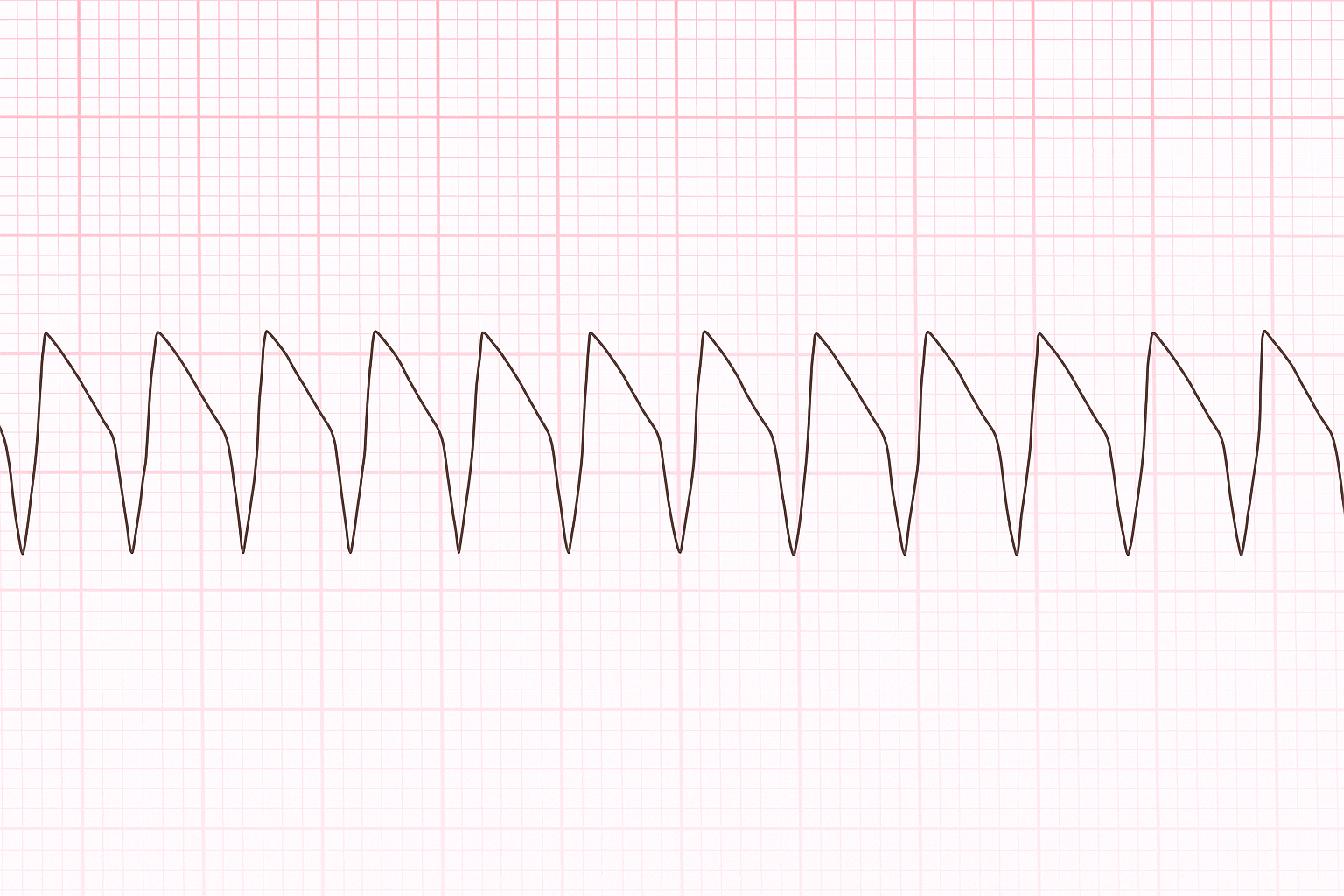Arrhythmia-Ventricular Fibrillation and Pulseless Ventricular Tachycardia
Pulseless ventricular tachycardia (VT) and Ventricular fibrillation (VF) are life-threatening cardiac rhythms that result in ineffective ventricular contractions. The ventricular motion of VF is not synchronized with atrial contractions. VT or VTach (Figure 24) is a condition in which the ventricles contract more than 100 times per minute. VF or VFib (Figure 23) is a rapid quivering of the ventricular walls that prevents them from pumping. The emergency condition, pulseless VT, occurs when ventricular contraction is so rapid that there is no time for the heart to refill, resulting in undetectable pulse. In both cases, individuals are not receiving adequate blood flow to the tissues. Despite being different pathological phenomena and having different ECG rhythms, the ACLS management of pulseless VT and VF are essentially the same. Pulseless VT and resuscitation for VF starts with the BLS Survey.
An AED reads and analyzes the rhythm and determines if a shock is needed. The AED is programmed to only prompt the user to defibrillate pulseless VT and VF rhythms. The machine does not know if the individual has a pulse or not. This is the primary reason you should not use an AED in someone with a palpable pulse. ACLS responses to pulseless VT and VF within a hospital will likely be conducted using a cardiac monitor and a manual defibrillator. Thus, the ACLS provider must read and analyze the rhythm. Shocks should only be delivered for pulseless VT and VF. Likewise, antiarrhythmic drugs and drugs to support blood pressure may be used.
Rules for Ventricular Fibrillation (VF)

Figure 23
| Regularity | There is no regular shape of the QRS complex because all electrical activity is disorganized. |
| Rate | The rate appears rapid but the disorganized electrical activity prevents the heart from pumping. |
| P Wave | There are no P waves present. |
| PR Interval | There is no PR Interval present. |
| QRS Complex | The ventricle complex varies. |
Table 6
Rules for Ventricular Tachycardia
(Regular/Rapid Wide Complex Tachycardia)

Figure 24
| Regularity | R-R intervals are usually, but not always, regular. |
| Rate | The atrial rate cannot be determined. Ventricular rate is usually between 150 and 250 beats per minute. |
| P Wave | QRS complexes are not preceded by P waves. There are occasionally P waves in the strip, but they are not associated with the ventricular rhythm. |
| PR Interval | There are no PR intervals present. |
| QRS Complex | QRS complex measures more than 0.12 seconds. The QRS will usually be wide and bizarre. It is usually difficult to see a separation between the QRS complex and the T wave. |
Table 7
Rules for Torsades De Pointes
(Irregular Wide Complex Tachycardia)

Figure 25
| Regularity | There is no regularity. |
| Rate | The atrial rate cannot be determined. Ventricular rate is usually between 150 and 250 beats per minute. |
| P Wave | There are no P waves present. |
| PR Interval | There are no PR intervals present. |
| QRS Complex | The ventricle complex varies. |
Table 8
The AED isn’t equipped to detect whether an individual has a pulse; VF and pulseless VT are shockable rhythms.
